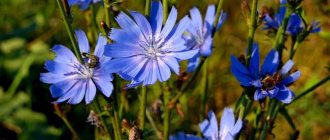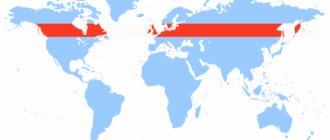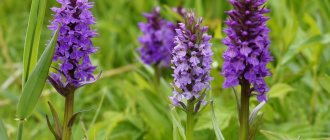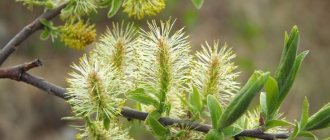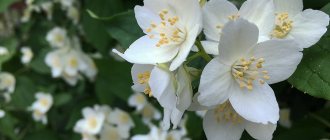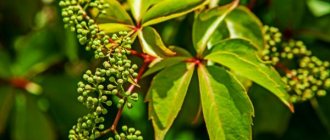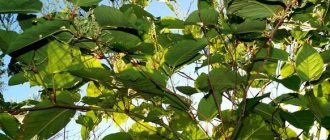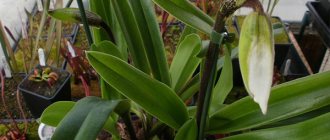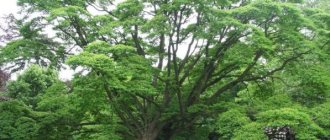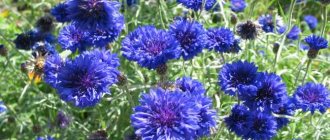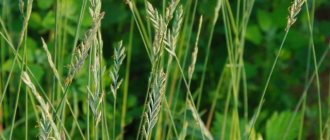The herbaceous perennial plant ginseng (Panax) is a member of the Araliaceae family. This genus includes 12 species. In nature, they can be found in North America and Asia (Tibet, Altai, Far East and China). Humanity has known for a long time that such a culture has healing properties; it is most often used as a tonic and adaptogen. Ginseng root is used in cooking in Korea and China. Representatives of official Chinese medicine are confident that this plant can prolong life and give strength.
Where does ginseng grow?
Ginseng is a relict plant.
An indirect confirmation of this is the unusual area of the culture, torn into two parts by the Pacific Ocean. Most of the 12 species of ginseng are indigenous to the Far East, but not so long ago one of the varieties was discovered on the American continent. Today, five-leaved ginseng is grown on extensive plantations as an effective medicinal plant. In addition to the west coast of the United States, ginseng's range covers the Korean Peninsula, Vietnam and Northeast China. Where does ginseng grow in Russia? Our country has the largest reserve of this plant material. Medicinal ginseng grows wild in the southern part of the Khabarovsk Territory, in Sikhote-Alin, and also in Primorye. Everywhere the plant is included in the list of specially protected species. There is a mention of ginseng in the Red Book of the Jewish Autonomous Region, but living specimens have not been found here for a long time.
Today it is known for sure that the plant prefers to settle in deciduous forests, under the protection of linden and hornbeam, fir, cedar, birch and maple trees. Ginseng loves shade, moisture, and needs nutritious, loose soil. In favorable conditions, the perennial can form continuous clumps. But at present the picture is not so rosy. For example, in the Primorsky Territory, ginseng grows in many areas, but an inquisitive nature researcher is unlikely to be lucky enough to see a large group of plants.
Contraindications
This medicinal plant should be taken with caution:
- If you have a food allergy to a component.
- During pregnancy and lactation. The effect of gynostemma on the body of pregnant women has not been studied.
- People with hypertension. "Herb of Immortality" increases blood pressure.
- For any sleep disorders. Gynostemma works like ginseng and can lead to insomnia.
- For kidney diseases.
Gynostemma is a plant whose healing effects have not yet been studied from the point of view of traditional medicine, and is not recognized by domestic pharmacology, so it should be taken with caution.
Collection and storage of ginseng
Shallot variety description, photo, cultivation and care photo
Ginseng roots will reach commercial quality only by 5–6 years. At this point, their mass may be 20–100 g, and in some cases more. When there is half a month left before digging up the roots, you need to stop watering the plants completely, thanks to this it will be much easier to pull the bushes out of the soil. The dug roots should be thoroughly rinsed under running water using a brush, while trying to remove any remaining soil, then they should be dried. Fresh raw materials can be placed in a plastic bag and placed on the refrigerator shelf, where they can remain for several weeks. However, only dried roots are suitable for long-term storage. If the roots are small, then they can be dried whole, while large roots should be cut into plates, the thickness of which can vary from 0.5 to 0.7 cm. In room conditions, the roots can be spread on central heating radiators or placed in an electric dryer, where they are dried at a temperature of 50 to 60 degrees. For storage, the finished raw materials are placed in glass jars, which are tightly closed and stored in a dry and dark place. It retains its beneficial properties for no longer than 5 years.
Foliage collection is carried out in September. Only bushes older than three years are suitable for this. The raw materials should be spread out in a thin layer in a shaded place for drying. Dried leaves are poured into cardboard boxes or paper bags, where they will be stored for no longer than 1 year.
Botanical description
Interestingly, the root of the plant retains its beneficial properties throughout the cold season, during the period when the above-ground parts of the medicinal herb die.
Botanical description of Panax ginseng:
- A herbaceous perennial plant reaches 40-70 cm in height. It has an erect single stem with a whorl in its upper part, consisting of long-petioled leaves.
- The leaves are palmate, pentasyllabic, wedge-shaped at the base. Each individual leaf is ovoid in shape with a pointed tip. The surface is slightly fleecy, the edges are serrated.
- The whorl produces a flower arrow bearing pale umbellate inflorescences. The peduncle is thin, the inflorescences are spherical, umbrella-shaped.
- Flowers are staminate, bisexual, in young plants collected in umbels of 10 pieces.
- The fruits are fleshy, red with three seeds, inedible, ripen in August or September.
Description, reproduction and distribution area of ginseng
Beautiful Cymbidium orchid photo and description of the variety
Perennial herbaceous plant of the Araliaceae family, up to 80 cm high, rarely higher.
The underground organs are the rhizome and the thickened main root. The root is taproot, oblong-cylindrical, usually with 2-6 thickened lateral branches (shoots) and thin skeletal roots (lobes), has a total length of 60 cm or more; the thickness of the main root is up to 3 cm. On the main and lateral roots, numerous very fragile seasonal suction roots develop in the spring and die off by autumn, after the death of which characteristic nodule-like tubercles remain on the roots. The root is fleshy (contains up to 75% water), aromatic, and grayish-yellow when cut. The rhizome of wild plants is usually thin, up to 10 cm or more in length, with clearly defined, spiral-shaped scars that form annually when above-ground shoots die. The annual growth of the root averages 1 g or slightly more. The above-ground shoot of ginseng is usually single; much less often there are multi-stemmed plants - with 2 (sometimes up to 6-7) shoots.
The stem is straight, thin, cylindrical, green or brown-red, glabrous, hollow inside.
Young plants have 1-2 leaves, adults have 4-5 (rarely up to 7); they are long-petiolate, usually five-fingered, up to 40 cm long, arranged in a rosette at the top of the stem. Leaf petioles with a purple-red tint. In mature plants, a peduncle up to 25 cm high with one simple umbrella develops from the center of the leaf rosette; below it there are often smaller lateral umbrellas.
The flowers are small, inconspicuous, with a white corolla.
The fruit is a bright red, lower, usually two-stone, often single-stone, rarely three-stone drupe. It blooms in July, the fruits ripen in August - September. Reproduces only by seeds. Seeds germinate only 18-22 months after autumn sowing (some seeds only in the 3rd or 4th year), which is due to the underdevelopment of the embryo in them. Lives up to 150 years.
Wild ginseng grows in the south of the Khabarovsk Territory, in the Primorsky Territory, as well as in Korea, China, and Manchuria. It grows mainly in cedar-broad-leaved forests, sometimes with an admixture of fir and spruce, less often in oak or hornbeam forests with an admixture of aspen, maple, ash and linden. Prefers loose, humus-rich soil with moderate moisture content. It does not tolerate direct sunlight and therefore is never found in open areas.
The first written mention of this plant was noted in the oldest Chinese work on the medicinal properties of “Shennong-bencao”, dating back to the 1st century BC, although it has been used in eastern folk medicine for at least 4-5 thousand years. And there has never been a more legendary plant in the history of medicine. He was credited with the ability not only to heal all diseases, but also to instill life in a dying person. People called it “the root of life”, “the miracle of the world”, “the blow of immortality” and other equally big names. The extraordinary fame of the plant gave rise to a real “ginseng fever” and became the cause of many tragedies and crimes. In 1709, Emperor Kan Hui imposed an absolute monopoly on the collection of ginseng. The search and extraction of medicinal roots were strictly planned. The collectors, who received special permission, went into the taiga under guard. Only at the edge of the forest was everyone assigned the place of search and the place of exit from the taiga. The necessary supply of food was provided for the strictly designated search time. The forests of China, where ginseng had been collected for thousands of years, were depleted, so from the middle of the 19th century the Ussuri region became the most productive place for extracting the root.
Natural ginseng roots weighing 100-200 g are very rare. In 1981, a ginseng root of unusual size was found in China. Its weight was 500 g, and the length of the shoot was 65 cm. This root had many branches and pearly growths, which make it especially valuable. An even rarer specimen was found in 1905 in Manchuria during the construction of a railway. The age of this plant was 200 years, and its root weighed 600 g. The root was sold in Shanghai for 5 thousand dollars, which was only half of its true value.
For the first time, ginseng came to Russia (it was brought by the Russian envoy to the court of the Chinese emperor, boyar N. G. Sapphiry) in 1675 from China.
Features of cultivation
4-year-old plant seeds are suitable for sowing. The collected seeds are freed from pulp and washed. Then ventilate in the shade and soak in a manganese solution for 20 minutes. The prepared seeds are placed in a nylon stocking, after being mixed with coarse sand in a ratio of 1:3. The sand is pre-sifted, washed and fried over a fire.
Seeds with cracked seeds are considered ready for sowing. A mixture of seeds and sand is buried 10 cm into the ground at the end of April or beginning of May. In late autumn before the ground freezes and in the spring after thawing, the seeds are removed, ventilated, disinfected and placed back. The soil is kept moist.
The seeds will hatch by autumn next year. They are cleared of sand, treated with potassium permanganate and sown in September or October to a depth of 5 cm with an interval of 3 cm in the row. The rows are spaced at a distance of 10 cm. When planting seedlings, maintain 15 cm between the roots, the row spacing is increased to 20 cm. The norm for bud depth – 5 cm with orientation to the east. The root is positioned at 45°.
Ginseng seeds
In the first year, one leaf with 3 leaflets will appear, the next year 1-2 leaves with 3-5 leaflets. A four-year-old plant has 4 leaves, with an annual increase in the number for the next 2 years.
Local species
Poultry flower Planting and care in the open ground and at home Photos and description
Where does ginseng grow in Russia? In natural conditions it is extremely rare. The unlimited collection of ginseng has led to a sharp decrease in its quantity. At the moment it is listed in the Red Book of the Russian Federation. The fact is that for medicinal purposes, wild rather than cultivated plants are more effective.
Wet mixed and cedar forests with plenty of shaded areas. These are the areas where ginseng root grows in Russia. The habitat of local ginseng is the Far East, namely Primorsky and Khabarovsk Territories. Its small territories are found in the north of the Korean Peninsula and Altai.
Status
Schoolchildren should have brief information about protected species and know what they look like. Plants taken under protection have their own status. Some of them are marked as rare species, and there are those that may cease to exist forever. In addition to common ginseng, 6 more species of plants that are in danger of extinction are listed in the Red Book of Russia: Ussuri's nest, Schreber's brazil, Korean mountain weed, Vorobyov's buzulnik, twisted kirkazon, Vorobyov's iris. Species that are reducing their numbers: dense-flowered pine, continental aralia, high-leaved juniper, hard juniper, Schlippenbach rhododendron, mountain peonies and milky-flowered peonies.
How is ginseng protected?
Of course, poachers are still causing serious damage to the number of medicinal plants.
However, they are not the only enemies of ginseng. The population of wild plants is declining due to the cutting down of forests suitable for plant growth, fires, and thinning of the forest floor. Unfortunately, ginseng produces few seeds. Not all of them germinate, and some of the seedlings die in the first years without forming a powerful, valuable rhizome. Planting in protected areas protects Far Eastern ginseng from extinction. In which reserve does ginseng grow? There is not one such place, but several. Today, programs to restore the population of the medicinal relic are working in four reserves of the Russian Far East. These are “Kedrovaya Pad”, as well as the Lazovsky, Bolshekhehtsirsky, and Ussuriysky nature reserves.
Not only in the Primorsky Territory, but also in other parts of the country, for example, on Sakhalin and Cheboksary, ginseng is grown on specially prepared plantations where conditions close to natural ones are created. Raw materials for pharmaceutical and cosmetic products are also obtained in China, Korea, the USA and Australia. At high humidity, in conditions of 20–30% illumination, plants remain for 4–6 years. Then the ginseng roots, which have managed to accumulate a fair amount of useful substances, are dug up, cleaned and dried, sorted and crushed.
Although cultivating ginseng helps protect natural reserves, and the plants themselves are indistinguishable from wild specimens, they require several years and painstaking, labor-intensive care to mature. Therefore, botanists turned to modern science. Today, more and more ginseng is obtained using in vitro cell culture.
What does ginseng look like?
When you mention medicinal plants, one of the first names that comes to mind is “ginseng.”
The culture has gained wide fame due to its healing properties and branched rhizomes, which outwardly resemble a bizarre human figurine. But what ginseng looks like, or rather its aerial part, is known to few. Common ginseng, recognized as the most valuable from a medicinal point of view, is a herbaceous perennial with one or, rarely, several erect stems ranging from 30 to 70 centimeters in height. A thin, no more than 6 mm thick shoot in the upper part is crowned with large split foliage, consisting of five oval or ovoid parts. The dense, palmate leaves of ginseng are attached to the stem with strong petioles, have finely serrated edges and a maximum length of up to 15 cm.
In mid-summer, ginseng blooms, forming an umbrella inflorescence, about three centimeters in diameter and consisting of 15–40 small greenish buds. The ginseng flower shown in the photo can hardly be called bright or decorative. White or pinkish corollas with a green toothed calyx and five petals are pollinated by insects. When flowering ends, ovaries appear in place of the flowers, ripening in the last days of summer or in September.
By looking at the photo of what ginseng looks like at this time, you can understand how much the appearance of a generally inconspicuous plant changes. On a peduncle 10–24 cm high, round, bright red berries with juicy pulp and 2–3 seeds inside ripen.
During the cold season, the above-ground part of the plant dies, but a large rhizome remains underground. It preserves the life of ginseng until the onset of heat and carries all the accumulated beneficial substances. Ginseng is a long-lived plant. The older the root, the greater its mass and the higher its healing power. At the beginning of the last century, a two-hundred-year-old root was discovered in Manchuria. Today it is unlikely that such a giant will be found.
Due to the high demand for medicinal raw materials, back in the 19th century, a merciless hunt for ginseng began in its natural habitats. It led to a sharp decrease in population numbers and a narrowing of the growing area.
Interesting Facts
The root of ginseng, for which this plant is grown, grows extremely slowly. Just imagine: in one year it increases in diameter by only a centimeter. Considering that useful substances accumulate in it only after several years, and in wild species - even dozens, its high price is easily explained. For one kg of wild oriental ginseng raw materials, manufacturers charge up to 75 thousand dollars.
Ointments, capsules, tablets, creams, syrups and tinctures are made from this raw material.
When choosing a root in a pharmacy, you should pay attention to the country of origin. This could be Russia, Korea, China and Canada
Moreover, pharmacists claim that local products are of the highest quality. The fact is that the use of chemicals that are used to accelerate root growth negatively affects its quality composition.
This plant is surrounded by a lot of legends. According to one of them, the appearance of a miracle root is associated with a lightning strike on a water stream. At this place a single stem appeared, which absorbed the fire of heaven. Another story tells of a man over whom even time had no power. His name was Zhen Shen. His gift aroused the envy of evil people, from whom he hid in the dense taiga. There nature protected him by turning him into a plant.
Whether these stories actually happened or not, we don’t know. But it is true that ginseng saves you from many ailments.
Preventive use of drugs based on the miracle root will increase the body's resistance to stress, viral and bacterial diseases, physical and mental stress. Glycosides have a beneficial effect on the activity of the heart muscle and blood vessels, normalizing blood pressure.
Vitamins C, A and E ensure cleansing of the liver from toxins and normalization of the endocrine system.
This is especially important for people with diabetes. Mineral salts of calcium and zinc contribute to the regenerative ability of tissues and wound healing
All this significantly contributes to slowing down the aging process of the body.
So, now everyone will be able to answer the question of where ginseng grows and what properties a person uses. This perennial herbaceous plant grows in the shade of mixed and cedar forests of Russia, Korea, China and Vietnam. Under natural conditions, its root accumulates nutrients for several decades. The underground organ of ginseng grows very slowly. Therefore, to increase its productivity, artificial plantations are created. This raw material is widely used in medicine and pharmacology due to its general tonic effect on the body.
Opinions of doctors and patients
Ginseng is a plant, but also a medicine that has proven effects on the human body. And before taking it, you need to consult with your doctor, study its effect and select the necessary dosage. The opinion of scientists and doctors practically coincides with the opinion of traditional healers, which is very rare. But in the case of the miracle root, the stimulating, adaptogenic, rejuvenating effect of the body is not in doubt.
Negative reviews of the use of ginseng occur only when the dosage or rules of administration are violated. Study the properties of the plant, think about whether it is right for you, and consult with a herbal therapist. Each person is individual and has his own opinion, based on your own experience. Ginseng helps everyone, but especially those who believe in its power.
Properties of Eleutherococcus, Siberian ginseng
Eleutherococcus (Siberian ginseng) is a folk remedy for neuroses, fatigue and after serious illnesses, general weakness, hypotension, to relieve stress, increase visual acuity and hearing. The root of the medicinal plant is widely used in preparations, dietary supplement NSP in capsules and tablets.
Latin name:
Eleutherococcus senticosus.
English name:
Siberian Ginseng or Eleuthero.
Family:
Araliaceae - Araliaceae.
Synonym:
prickly freeberry.
Common names:
Siberian ginseng, wild pepper, devil's bush.
Pharmacy name:
Eleutherococcus root - Eleutherococci radix.
Parts of Eleutherococcus used:
root.
Photo of berries of the medicinal plant Eleutherococcus senticosus (Siberian ginseng)
Botanical description:
Eleutherococcus is a shrubby plant reaching a height of 3-5 m, sometimes 7 m. The stem has few branches and is covered with thorns; the leaflets of the 5-membered compound leaves resemble those of a cherry tree. Small yellow flowers are collected in a spherical inflorescence; The fruits are black and aromatic.
Habitat:
Eleutherococcus senticosus grows only in the Far East - in the Primorsky and Khabarovsk territories, the Amur region and southern Sakhalin. Outside Russia it grows in Korea, Japan and northeastern China.
Collection and preparation:
Rhizomes and roots are used for medicinal purposes. The roots and rhizomes of Eleutherococcus are harvested in the fall, from the second half of September, digging up only adult plants above 1 m. The roots are quickly washed, chopped into pieces and dried at a temperature of 70-80°C. Medicinal raw materials most often serve as materials from natural habitats, but the demand for Eleutherococcus senticosus is so great that recently cultivated plantings of this plant have been made.
Chemical composition:
In the roots and rhizomes of Eleutherococcus senticosus, 7 glycosides were found, called eleutherosides A, B, C, D, E, F. 5 eleutherosides belonging to lignan glycosides were isolated in crystalline form. In addition, the roots contain pectin, resins, gums, anthocyanins and 0.8% essential oil.
Eleutherococcus - beneficial properties and applications
Eleutherococcus root
is part of the drugs, dietary supplement NSP
Antidepressant 5-hydroxytryptophan
,
Achiv with Yohimbe NSP
,
GGC
,
Protective formula
,
Nutri Burn
,
Prostate Formula
,
C-Ex
capsules and powder, produced in the USA according to the international GMP quality standard for medicines.
Photo of Eleutherococcus senticosus (Siberian ginseng) root
In its properties, Eleutherococcus senticosus is close to ginseng, which is why it is sometimes (especially in the USA) called “Siberian ginseng.”
Employees of the taiga expedition of the Academy of Sciences noticed that bears, deer and other animals use this thorny bush for food. Research began in which they studied the rich composition of Eleutherococcus: seven different glycosides were found in its root system, five of which turned out to be unknown to world science
The bush turned out to be rich in essential oils, resins, valuable vegetable fats, vitamins (especially C and carotene).
During experiments on laboratory mice, it was found that Eleutherococcus senticosus increases endurance, performance and vitality. After this, Eleutherococcus preparations began to be used in sports medicine, which helped Soviet athletes achieve tremendous success.
Eleutherococcus has a general tonic and adaptogenic effect, increases the nonspecific resistance of the body. It has a stimulating effect on the central nervous system, eliminates fatigue, irritability, restores and increases physical and mental performance, and protects against adverse environmental factors.
Studies have shown that Eleutherococcus reduces the risk of cancer and prevents tumor metastases to other tissues. The plant preparation promotes the dilation of peripheral blood vessels, including the cerebral and coronary arteries, and exhibits a hypoglycemic effect - it reduces blood sugar by increasing the permeability of cell membranes to glucose (advisable for mild diabetes). Eleutherococcus has a beneficial effect on the condition of the eyes - it relieves symptoms of redness and eye fatigue, especially when working at the computer; improves nutrition of eye tissue; increases visual acuity.
Contraindications.
Eleutherococcus preparations are not recommended at high temperatures, in the acute period of infectious and somatic diseases, and in severe hypertension.
Cultivation of relic
Cultivation of a medicinal perennial is a kind of protection of its natural reserves. In terms of their properties, cultivated plants are no different from wild ones. To grow a large amount of raw materials, you need to put in a lot of effort, as it is a very labor-intensive process. However, science does not stand still, and now it is possible to obtain a valuable medicine using in vitro (cell culture). Biomass cultivation using this method is carried out in laboratory conditions.
The cultivation of common ginseng is not limited only to Primorsk. It is grown in Cheboksary and Sakhalin. For this purpose, special plantations are prepared with conditions close to natural. The root is also cultivated in other countries, such as the USA, China, Australia and Korea. The resulting raw materials are used for the development of pharmacological and cosmetic products.
Shade and high humidity are optimal conditions for growing medicinal perennials. In order for the roots to accumulate the required amount of nutrients, they need to stay in such an environment for about 5 years. Once they reach maturity, they are dug up and sorted. Then they go through a process of drying and grinding to the desired degree. It was noticed that on plantations the plant develops faster.
Ginseng is whimsical and capricious
It likes soft humus soil with a layer of rocks underneath. The root needs moderate dampness; excess moisture spoils it. In rainy summers, it sometimes does not produce leaves, freezing in its earthen cradle. Ginseng does not withstand the direct rays of the sun.
The fame of ginseng as a healing agent dates back four thousand years and comes from China. ...The word “ginseng” itself is Chinese and means “a branched root that looks like a person.”
The life of this root in nature is peculiar. Already in early May you can see the emerald green of its palmate leaves. In June they reach full strength and sit horizontally on long petioles. The speckled, purple stem of large ginsengs can be half a meter or more in height. The older the plant, the more leaves it has.
From June to July the plant is decorated with small white and pink flowers. In July - August, it produces soft red berries, flattened on the sides, the size of bird cherry. Ginseng berries are poisonous, and the leaves and stem accelerate wound healing.
People are attracted to the yellowish-white ginseng root. The shape of the root is sometimes bizarre and unusual. As a rule, it is branched, and all its parts have a regular rounded shape. The root has “legs”, “arms”, “belly”, “chest”, which often give it an amazing resemblance to a person. The root is covered with the finest hair lobes.
The medicinal root itself is divided into the root itself and a neck, similar to the neck of a pot-bellied bottle. Large roots have a neck as long as a pencil. Horseshoe-shaped scars from old leaves on the neck help experts determine the age of the plant.
The search for ginseng is tedious
You can wander through the taiga for a long time and not find a single root, but sometimes you come across families of ginseng, when up to a dozen or more medicinal plants grow on a few square meters. It’s not enough to find the root, you also need to be able to dig it up. Not a single hair can be damaged.
Ginseng lives for a very long time. One hundred years is an age that is not uncommon for him. In 1956, a root was found, the age of which experts determined to be three hundred years old.
The average weight of the root is 20-30 grams. Scientists Grushevitsky and Gutnikova write about a root of 400 grams. The famous researcher of the Ussuri region V.K. Arsenyev writes about 600 grams of ginseng, found in 1905 on Khekhtsir. This giant was two hundred years old and was considered the largest ever found on earth.
Such giants of the taiga may still be growing in the Far Eastern forests today. Large roots are as thick as an arm, their length reaches half a meter.
This valuable plant is studied in China, Japan, Korea, Germany, and the USA. Beautiful specimens of it are found in the Far East. Now in our country a lot of work is being done to breed ginseng under artificial conditions.
Botanical characteristics
In Russia, where true ginseng grows, it is represented by single plants. Its stem is more than 50 cm long. Sometimes there are specimens with a large number of stems.
Ginseng leaves are simple. They grow on long petioles, located on the tops of the stems in the form of a rosette. Small flowers are collected in groups of 10 in a simple umbrella. They are self-pollinating. The fruits, which ripen in autumn, are represented by juicy berries. Up to 3 seeds ripen in their pulp.
What are the benefits of ginseng
The root of this plant is especially valuable. It contains:
- a lot of vitamins - A, E, F,
- folic and
- a nicotinic acid,
- B vitamins,
- pectins, oil and
- healing mucus.
Doctors say that it contains a huge amount of valuable active substances - panaxosides, which slow down the development of cancer cells.
In addition, ginseng helps cope with:
- chronic fatigue,
- depression,
- strengthens the immune system,
therefore, tinctures and extracts of ginseng are prescribed after a viral infection, when the body is severely weakened.
The famous ginseng root, whose properties are so valuable, grows very slowly, gaining about three grams in weight every year, and the demand for this product is very high, so a special agricultural technology was developed, thanks to which it became possible to accelerate the growth of the root.
It is believed that ginseng root acquires valuable properties only after ten years, when the third leaf appears on the plant.
Beneficial properties of ginseng root for men
Men also have something to pay special attention to this valuable medicinal plant - after all, ginseng has a number of properties that are especially interesting for men:
- Ginseng is a natural energy drink that tones the body and activates the body's internal reserves when there is a lack of energy. It stimulates muscle growth and this property is used by athletes in competition preparation programs. But you need to keep in mind that long-term use of ginseng is contraindicated
- Ginseng helps in the treatment of sexual dysfunction, increases sexual activity
- According to some reports, ginseng stimulates sperm production
And, of course, these are not all the beneficial properties of ginseng for men - the range of beneficial properties of this plant is much wider! Let's list them all.
Ginseng cultivation and care
Ginseng propagates by seeds. The seeds are mixed with calcined and sifted sand in a ratio of 1:4 and poured into a box measuring 30x40x50, at the bottom of which a five-centimeter drainage layer is laid. Make small holes in the walls of the box for ventilation. Place an 8cm layer of clean sand on the layer of seeds with sand and moisten all layers generously. For the first four months, keep the box at a temperature of 18°-20°C, constantly moistening the contents. If the seeds have cracked and seedlings have appeared, but it is too early to plant, keep the box with the seeds at a temperature of 0°C until the time for sowing approaches.
For successful cultivation of ginseng, an important factor is the composition of the soil mixture. The optimal composition is: forest soddy-podzolic soil - 2 parts, leaf compost - 1 part, very coarse river sand - 1 part, rotted sawdust - 1 part, dry pine needles - 1 part, rotted manure - 1 part, peat chips - 1 part. Mix all the ingredients thoroughly, adding phosphorus fertilizers at the rate of 200g per 1 sq.m of soil mixture and place them in prepared beds placed from west to east with a slope so that water does not stagnate during thaws. Ginseng is shade-loving and does not tolerate direct sunlight. Based on this, choosing a place for beds.
With an arbitrary length of the bed, its width should be 120cm, and the height above the soil level should be 25-35cm. First, a twenty-centimeter layer of soil is selected on the site, in its place small pebbles or crushed stone are poured, and the soil mixture is poured onto it, which then should shrink within two months. A month after you lay the soil in the beds, disinfect it with a 0.4% formaldehyde solution. Sowing takes place at the end of April. The seeds are dried (not in the sun), removed from the sand, treated for 10-15 minutes with a 0.5% solution of potassium permanganate and buried 4 cm into the soil. The soil is moistened and then mulched with a two-centimeter layer of dry humus. When the shoots appear, protect them from the sun with wooden shields disinfected with a 1% solution of Bordeaux mixture.
In the fall, in mid-October, the grown seedlings are transplanted to other beds, which need to be prepared at the end of September. The dug up roots are sorted, healthy ones are planted in permanent beds to a depth of 4-6cm, watered, mulched with humus and covered for the winter with a layer of foliage 8-10cm thick. In early spring, the mulch is removed and sun protection is immediately installed. Ginseng grows slowly.
Seeds for germination are collected from plants that are four years old. The commercial qualities of the roots also appear when the plants reach four to five years of age. Plants of the required maturity are dug up, leaves and stems are removed, washed and dried with good ventilation at a temperature of 50°C. Ginseng root is a valuable medicinal product that has a stimulating effect, prolongs life and improves health. They treat diseases such as gastric ulcers, anemia, diabetes mellitus, gastritis, nervous system disorders and much more.
After this article they usually read
Add a comment
Healing root
The extraordinary healing properties of ginseng have become legendary. The healing root relieves diseases and can bring a dying person back to life.
The rich chemical composition explains the use of the root for medicinal purposes since ancient times. It contains:
- resins,
- alkaloids,
- panaxic acid,
- tannins,
- sulfur and phosphorus,
- essential oils,
- phytosterol,
- sugar,
- manganese,
- iron, in
- itamins and microelements,
- saponins,
- panacea oil,
- pectins,
- starch.
There is a general tonic, stimulating and analgesic effect, the ability to increase performance, normalize blood pressure and blood sugar, remove bile, stimulate thyroid function, and improve gas exchange processes in the lungs.
Ginseng root
Ginseng is effective for nervous disorders, fatigue, and for the treatment of hypotension and depression. The use of ginseng root enhances mental activity and promotes longevity.
Contraindications for use
Like other plants, ginseng has beneficial properties and contraindications for use. Before using the medicine, you should consult with your doctor.
Particular attention should be paid to pregnant women and children. In this case, the extract can be used only under the supervision of a doctor and in compliance with established standards.
Ginseng extract is a strong allergen, so people suffering from severe allergic reactions should avoid using it. If a person suffers from insomnia or acute febrile syndrome, ordinary ginseng is not recommended in this case. A categorical contraindication is children under 12 years of age.
Consuming this plant in its pure form does not pose any serious danger. At maximum, when using high doses, headache, vomiting and nausea may occur. If the medicinal parts of ginseng are included in potent medications, an overdose causes a large load on the heart muscle, which, in turn, causes increased blood pressure and all sorts of problems with cardiac activity.
Ginseng tincture
The healing elixir is used to reduce blood glucose and cholesterol levels, improve adrenal function, and relieve symptoms of drowsiness. Ginseng root infused with alcohol is indicated for overexertion, neurasthenic and asthenic syndromes, exhaustion of the body, insufficient erection, vegetative-vascular dystonia, reduced immunity, diabetes mellitus and arterial hypotension.
Direction of use: 30-50 drops 40 minutes before meals three times a day (can be diluted in water or juice). The maximum safe daily dose for an adult is 200 drops. The tincture has a stimulating effect on the human body, which is why it should not be taken immediately before bed. While consuming ginseng, it is strictly forbidden to drink alcoholic beverages.
In case of an overdose of the drug, adverse reactions are observed: body temperature rises, skin rashes appear, dizziness, nausea, vomiting, insomnia, tachycardia, and a sharp jump in blood pressure occur.
Contraindications for use: hypertension, increased excitability, allergies, pregnancy, lactation, age under 16 years, insomnia.
Recipes for making tincture:
- From dry root. Pour ginseng powder (30 g) with vodka (1 l), leave for 4 weeks, strain. Take for 2.5 months, repeat the course after 30 days.
- From fresh root. Rinse the raw materials thoroughly, remove soil, dry, then puree in a blender. Pour the ginseng root pulp (100 g) with vodka (1 l), leave for 1 month, periodically shaking the mixture, and strain. Use for 30 days, after a ten-day break, repeat the course.
To prepare the tincture, instead of vodka, you can use 40% or 50% alcohol. Store the healing elixir in a glass jar in a dark place, tightly closed.
The tincture is recommended for women at the stage of planning pregnancy, as it stimulates blood circulation in the pelvis. At the same time, immediately after conception the product is contraindicated for use.
Interestingly, ginseng tincture contains saponin, which stimulates reproductive function in men. It serves as a powerful libido stimulant, dilates blood vessels, improves sperm quality, promotes erection, and stimulates the functioning of the sex glands. The tincture is used to enhance potency, relieve fatigue and signs of overwork. It has a beneficial effect on the organs of the endocrine system.
Before treatment you should consult your doctor.
Types and varieties of ginseng
Two types are of interest as medicinal raw materials:
Common ginseng (Panax ginseng)
The plant we described at the beginning of the article. In the wild, this species, unfortunately, is becoming increasingly rare, but it is widely cultivated.
In the photo: Panax ginseng
Five leaf ginseng (Panax quinquefolium)
Either American ginseng or pearl ginseng is a plant native to the Himalayas and North America. It is also rare in nature, but is cultivated in China, France and Wisconsin. This is the only species of the genus that has a cooling effect.
In the photo: Five-leaf ginseng (Panax quinquefolium)
Description for children
Future generations must be aware of the fact that they are also responsible for the conservation of flora and fauna. Therefore, a child needs to instill a love for flora and fauna from an early age. In many schools, such training is included in the general curriculum. How can you teach children the characteristics of a relict plant that is on the verge of destruction?
What can be mentioned in an essay for children about ginseng? A plant description might look like this:
- Ginseng is the oldest medicinal plant.
- The root is the part that deserves special attention.
- The upper part of the rhizome, called the neck, is very wrinkled. The older the plant, the more powerful its root. As it develops, the lateral processes, called adventitious roots, thicken and are divided downwards into 3-6 parts. Due to the fact that the lower root system absorbs more nutrients, a healing and interestingly shaped root, similar to a human figure, is formed.
- Upon closer examination, you can find such parts of the body as arms, legs, stomach, chest and a small head, sometimes turned to the side. From Chinese, the word “zhen” is translated as a person, the word “shen” is the root. It is from this part of the plant that many medicines are developed that support human life.
- The above-ground part of the plant before fruit formation has a less attractive appearance. In July, ordinary herbaceous bushes throw out inconspicuous umbrella-shaped inflorescences. On their corollas you can observe many insects that pollinate the plant.
- The result of the work of beneficial insects is the appearance of ovaries at the end of flowering. And at the beginning of September, the inconspicuous plant is transformed by well-ripened bright scarlet berries, distinguished by their plump pulp.
For grade 3, in a message about ordinary ginseng, it would be good to pay attention to the following points:
- external characteristics of the plant;
- what are relict plants and why are they interesting;
- where it grows in the wild;
- beneficial properties of the root;
- what measures have been taken to protect the living natural monument;
- what needs to be done to contribute to the preservation of the plant world.
Description of the ginseng plant.
Ginseng is a herbaceous perennial plant with a green or green-brown stem up to 80 cm high, ending in a whorl of 2 to 6 palmate leaves on petioles up to 10 cm long. The peduncle rises from the middle of the whorl and, as a rule, has one terminal umbel. In plants with a well-developed root, it is often accompanied by several more lateral umbrellas. There are an average of 16 flowers in the umbrella, but there are also multi-flowered specimens (40 or more flowers). The bright red ginseng fruits are compressed at the top and sides and contain two light yellow seeds. The seed is flat, disc-shaped, and has a thin skin.
The underground part of the plant consists of rhizome and root. In adult wild plants, the rhizome is long, with numerous stem traces, the number of which corresponds to the number of years of the plant’s life. As for cultivated plants, their rhizome can be greatly reduced, but in some specimens it is still preserved and has up to 7-8 stem traces.
The root of ginseng is yellowish, fleshy, cylindrical, with numerous branches.
One of the biological features of ginseng, which has long served as a reason for superstition, is “sleep”: if the renewal bud is damaged, the above-ground shoot of ginseng does not form in the current year, and such a plant is said to have “slept”. In fact, this condition of ginseng is caused by the fact that the dormant bud of the second year is not sufficiently differentiated and cannot form a new shoot in the current year. When bud differentiation is complete, a new aboveground shoot appears. By the way, ginseng can remain in a state of so-called sleep for several years. However, most often the plant “sleeps” for no more than a year.
How long does ginseng last?
The age of old plants can only be determined approximately. However, plants have been recorded whose rhizomes bore more than 140 stem traces, that is, these plants were at least 140 years old. Some researchers believe that ginseng can live up to 400 years of age.
Legends about ginseng.
Homeland of ginseng.
Ginseng has its origins in Manchuria and Korea. However, it is not exclusively a Far Eastern species, since identical, from a botanical point of view, ginseng also grows in Canadian forests, where it was discovered in 1715 by the French Jesuit Father Lafiteau. The first mentions of the use of ginseng in Korea date back more than two thousand years ago - only wild-growing ginseng was used, the root of which was sold more expensive than gold, weighed with it on the same scales. For many centuries, ginseng has been cultivated in southwest Korea.
Collection and storage of ginseng.
Ginseng is harvested fresh and dried, subjected to special processing (most often, fresh root is boiled in sugar syrup). Collecting roots once required enormous effort.
The finished raw material in appearance is fleshy roots with 2-5 large branches, the “body” of the root is thickened. almost cylindrical, spirally or longitudinally wrinkled on the outside; dried roots are fragile, yellowish-white in color; in the upper part of the root there is a “neck” connecting the root to the above-ground stem. Ginseng roots have a slight specific odor; sweet, burning, then bitter taste.
Soil preparation
In the area for planting ginseng, moisture stagnation, flooding, and close proximity to groundwater are excluded. A north-eastern or north-western slope is suitable. The rays of the rising and setting sun should be ensured. With strong shading, the roots weaken. 1/10 of daylight illumination is sufficient for development. A young plant needs less light than an adult.
Soil preparation requires special care. Its components must mature for several years to resemble natural taiga.
The soil required is loose, with high permeability of moisture and air, neutral acidity pH 5.7 - 6.8, containing enough organic matter and up to 8% humus.
Real ginseng
The soil mixture is prepared from:
- mixtures of forest soil,
- five-year mullein humus,
- turfy soil and rotten leaves,
- sand,
- lake silt,
- wood dust,
- ash.
Ridges 30 cm high and 1 m wide are prepared in 2-3 months. Orientation from east to west is required. To avoid infection, ginseng should not be planted after potatoes, cucumbers and tomatoes.
Properties of ginseng: harm and benefit
Medicinal properties of ginseng
There are many legends that ginseng has incredible healing powers. They say that it helps to restore youth, get rid of all diseases, and can even raise hopeless patients to their feet. There is some truth in these legends, and the healing power of this plant is explained by its unusual composition. Thus, the root contains resins, alkaloids, sulfur, phosphorus, tannins, macro- and microelements and vitamin C. Ginseng has a tonic and analgesic effect, it also helps improve gas exchange and the functioning of the endocrine system, normalize blood pressure, increase efficiency, and waste bile, lowering blood sugar. It is used as a remedy that relieves physical and mental strain, as well as stress, and it also has a sedative effect for neuroses. This plant also helps improve vision and memory, strengthen the immune system, normalize metabolic processes, and with its help, wounds heal much faster.
If a man has problems with potency, then experts recommend that he use the root of this plant for 8 weeks. At the end of this course, sexual function will be completely restored, and sperm motility will also noticeably improve.
This plant is used in the form of tinctures, powders, extracts, ointments and tea. Experts prescribe ginseng extract if there is weakening of sexual function or hypotension, and it also helps with fatigue and restores strength after stress or after a serious illness. In alternative medicine, ginseng tincture is widely used, which has a metabolic, antiemetic, adaptogenic, biostimulating and tonic effect. This product contains peptides, saponin glucosides, minerals, vitamins, essential and fatty oils.
Contraindications
This plant, as well as products prepared on its basis, is prohibited for use by pregnant women, with bleeding, increased nervousness, and various inflammations. It is considered a powerful stimulant, and therefore in some cases contributes to the development of headaches, nausea, vomiting, and also contributes to the deterioration of well-being in hypertensive patients. Experts do not recommend taking it to people under 45 years of age. And even if you do not have any contraindications, before you start taking ginseng, you should definitely consult with a qualified specialist.
Application and medicinal properties
Ginseng is most often used in Traditional Chinese Medicine. Roots in the form of plates, dried leaves and candied roots are used. In addition, ginseng is used for treatment in powder.
Medicines and tinctures made using ginseng, or a tea drink made from it, are used primarily as a tonic; they increase vital energy. The plant has antidiabetic, antitoxic, hypertensive, aphrodisiac, antiallergic, antitoxic properties. In addition, it stimulates the central nervous system and is an adaptogenic, immunostimulating, and psychotonic agent. Ginseng has a positive effect on performance and increases the body's resistance to disease.
For speech impairment, weakness of the limbs and thirst, preparations from ginseng leaves are prescribed. Medicines from the roots are used for infectious psychoses, hypotension, neurasthenia, fatigue, diabetes, alcoholism, anemia and other indications. It’s not without reason that because of its undoubted benefits, this plant is called a panacea for the body!
Ginseng can be harmful to human health in some cases and is therefore contraindicated in pregnant and breastfeeding women.
Recipes
- To prepare an extract from the roots, you need 40-50 g of root, which must be crushed, filled with water and the mixture boiled until 50% of the liquid remains. Take 2 times a day, morning and evening, 1 tsp. before meals.
- Panax ginseng powder should be taken three times a day, 0.25 g. First, you need to start with small doses, gradually increasing them.
Making tea
Raw leaves can be drunk separately by brewing with boiling water. Some add it to herbal preparations. You can prepare a healing drink from dried raw materials. To brew tea, you will need 1.5-2 tsp per glass of hot water (95-98 0C). crushed dried leaves. It is recommended to fill the grass with water and wait 3-5 minutes.
To prepare tea from fresh raw materials, you will need about 3 tsp per 1 glass. crushed gynostemma.
When drug medicine turns out to be powerless, people resort to unconventional medicine: they are treated with herbal remedies. One of the plants that can help fight diabetes, obesity, nervous system disorders and atherosclerosis is gynostemma or jiaogulan. An unpretentious perennial plant native to China, decorates garden plots. Tea made from it prolongs life, and elixirs and extracts have anti-aging and anti-inflammatory effects.
What impact does
“The Herb of Immortality” is widely used by Chinese doctors, but, without scientific confirmation in Russia, it is classified as a folk remedy.
In China, fresh or dried gynostemma is used to make brewed tea. The leaves and fruits of Gynostemma are collected to make tinctures, tablets and powders. In taste and its tonic properties, gynostemma resembles ginseng or fireweed.
It is sweet, so it can replace traditional sugar and be used by people with diabetes.
Gynostemma, whose healing properties have been known in China since 1400 AD, is still one of the ten most famous tonic herbs. In addition, tea and medicinal forms obtained from this plant are used by traditional healers in the following cases:
- For weight loss. The sweetish taste of leaves and berries can reduce a person’s craving for sugar, which leads to weight loss. This plant also regulates water-salt metabolism, metabolism, removes excess fluid from tissues and breaks down fats.
- To increase energy and endurance. It is noted that this vine has a pronounced tonic effect, like ginseng, tea or coffee.
- The microelements that make up the “herb of longevity” keep the heart and blood vessels in good shape. Therefore, tinctures and powders from it are used to improve the cardiovascular system.
- Gynostemma has a weak diuretic effect, therefore, improves kidney function.
- Gynostemma is an anti-aging “medicine”. Its biological properties slow down the aging of the body, prolong human activity, and preserve the mind and memory of older people.
Growing Gynostemma quinquefolia
Jiaogulan refers to plants that have both female and male genders. They are planted in pairs if they want to propagate, or one by one if they do not pursue such a goal. Jiaogulan loves light mineral soils, light and warmth, but also develops in shaded areas.
Related article: Pruning fruit bushes in spring and winter: raspberries, currants and gooseberries
Lina can grow both on the balcony and in the country house. At home she will be comfortable in an ordinary flowerpot, but outside it is better to let the branches cling and stretch up the mesh, tree trunk or fence.
Landing
A plant that is planned to be grown outside is recommended to be planted as seedlings. The air temperature at the time of landing should be at least +15 0C.
A home flower grows from seeds and does not require replanting. The soil on the street should be well moistened and loosened by the time the jiaogulan is transferred into it.
The planted flower should be sprinkled with mulch and watered abundantly. The support on which the plant will climb is installed after sowing.
How to care
Longevity grass loves abundant watering and regular feeding. On hot days, the perimeter near the vine must be kept moist to prevent the appearance of a hardened crust. Additionally, every evening (after sunset) you can spray the leaves of the plant with slightly warm water.
In late autumn and winter without snow, the vine should not be left without shelter. It can be covered with a dense layer of leaves, spruce branches or a wooden box. In regions where the thermometer drops below -10 °C, jiaogulan is dug up, transplanted into pots and left at home until spring.
How to collect and store
The grass is collected throughout the summer if it grows in the garden, and when shoots appear if it is grown at home. The leaves and fruits are used in cooking. These parts of the plant can be eaten raw (cut into salads, brewed in a teapot, added to soups), as well as dried. Liana leaves are dried like any other medicinal herb: in a room with good ventilation, in semi-darkness, spread out on a horizontal surface in one layer.
For two to three weeks, the raw materials are regularly shaken and mixed so that they dry evenly. As soon as the leaf has become brittle, it is crushed and stored in pre-prepared and labeled (indicate the date of collection and drying) containers: craft bags, paper boxes or jars with lids.
Store dried southern ginseng in a dark room, like teas and bulk products. The shelf life of healing tea is one year.
Ginseng plant: photos, types, cultivation, planting and care in open ground
Ginseng root has been used in Chinese medicine for over 5,000 years. As a powerful adaptogen, that is, a remedy that protects the body from injury and stress, it has received great recognition today in Western medicine. Two relatives of Chinese ginseng, American ginseng and Siberian ginseng, or Eleutherococcus, also have the same effect.
- rhizome
- roots
Chinese or Korean ginseng (P. ginseng)
A long-living rhizomatous perennial with a fleshy main root and a straight, thin stem and several palmate leaves at the top.
Rhizomatous perennial
Eleutherococcus senticosus, or Siberian ginseng (Eleutherococcus senticosus)
The subspecies belongs to the Araliaceae family, but is a deciduous shrub with palmate leaves and clusters of black berries that ripen in the fall.
Clusters of black berries
American ginseng (P. quinquefolius)
The varieties are very similar in appearance and medicinal properties to Chinese ginseng.
American ginseng
Japanese ginseng (P. japonicus)
The subspecies is widely used in Japan to make tonic drinks.
Japanese ginseng
False ginseng (P. pseudoginseng)
Strong hemostatic agent (a drug that increases blood clotting).
False ginseng

